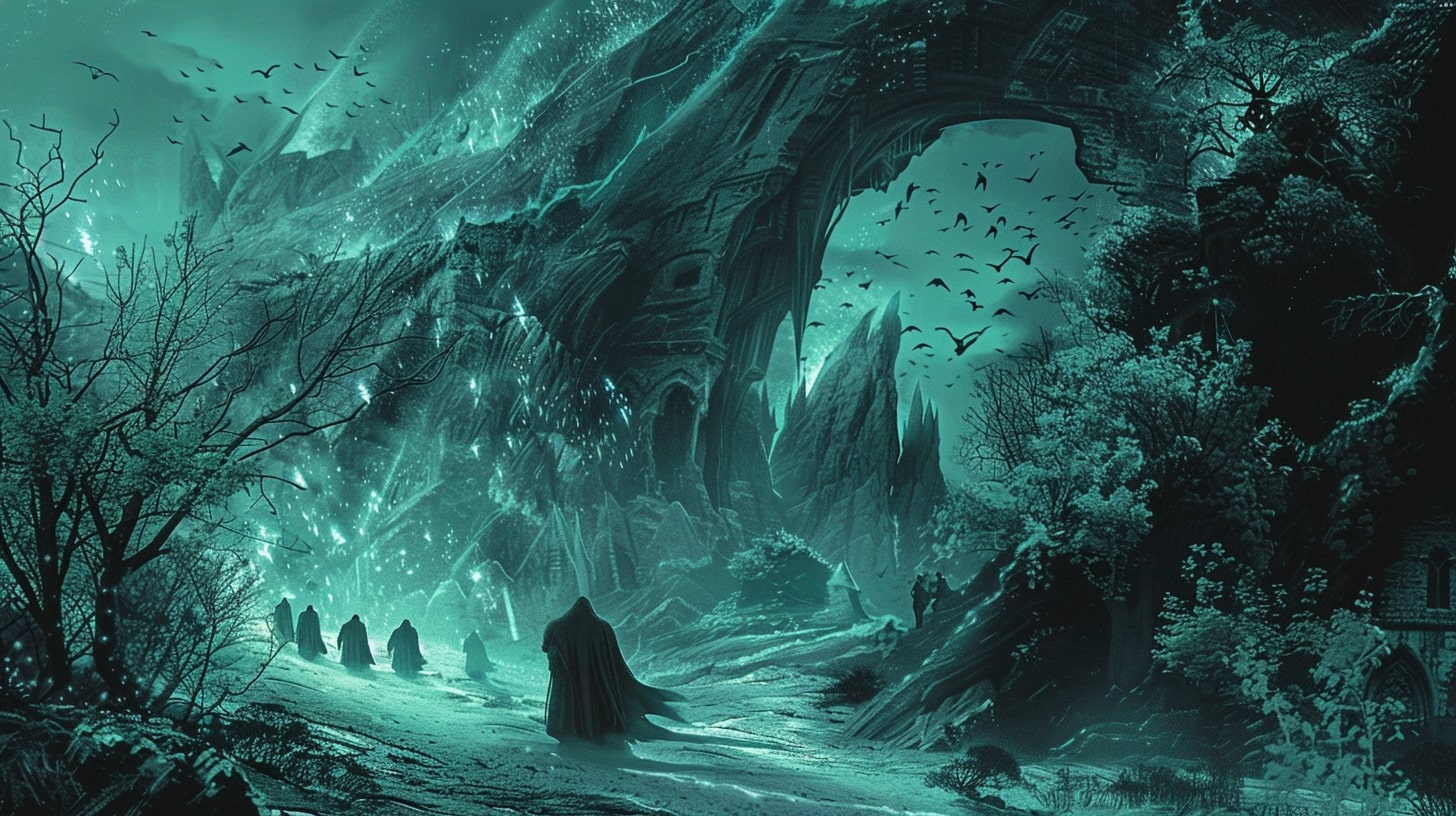Crafting a Linguistic Universe
The Importance of Worldbuilding Languages
Creating a unique language can significantly enhance your fantasy writing. Worldbuilding languages, often called "conlangs" (constructed languages), offer an additional layer of depth to your fictional world. They provide authenticity and can make your setting feel more immersive. When you develop a language, you showcase the intricacies of the cultures and societies within your universe.
A well-crafted language can also serve as a tool for character development. By allowing characters to speak in their native tongue, you can reveal aspects of their background, social status, and even their personality.
How Worldbuilding Languages Enhance Your Fiction
Worldbuilding languages can elevate your storytelling. They add a sense of realism and can make your readers feel like they are truly part of the world you've created. When characters communicate in a constructed language, it enriches the narrative and can make interactions more engaging.
Incorporating a constructed language can also aid in plot development. Unique words and phrases can carry cultural significance, symbolize power, or even serve as keys to unlocking mysteries within your story. If you're building a magic system, consider how language could play a role. For instance, a symbolic magic system or a music based magic system could be deeply intertwined with linguistic elements.
To illustrate the benefits, here's a table summarizing how worldbuilding languages can enhance various aspects of your fiction:
| Aspect of Fiction | Benefit of Worldbuilding Language |
|---|---|
| World Immersion | Adds authenticity, makes the setting feel real |
| Character Development | Reveals background, social status, and personality |
| Plot Development | Unique words and phrases can drive the plot |
| Cultural Depth | Reflects societal norms and values, enhances cultural portrayal |
For more tips on building rich and immersive worlds, read our guide on building a fantasy world.
By integrating worldbuilding languages into your fiction, you can create a more compelling and immersive experience for your readers. Whether you're developing a hard magic system or exploring worldbuilding societies, a well-designed language can be a powerful tool in your writing arsenal.

Worldbuilding Languages: Elements of Constructed Languages
When creating a linguistic universe for your fantasy world, it's essential to understand the core elements of constructed languages. These elements include phonology and sounds, grammar and syntax, and vocabulary and lexicon.
Phonology and Sounds
Phonology deals with the sounds of your constructed language. It's about deciding how words will sound and how they will be pronounced. Different languages have unique phonetic systems, and your worldbuilding languages should too. You can create a list of phonemes (basic sound units) that your language will use. Here is an example of how phonemes might be organized:
| Phoneme Type | Examples |
|---|---|
| Vowels | a, e, i, o, u |
| Consonants | k, t, m, s, n |
| Diphthongs | ai, ei, oi |
Creating a unique set of sounds will make your language distinct and immersive. For inspiration, you might look at real-world languages or even building a haunting world for a darker tone.
Grammar and Syntax
Grammar and syntax are the rules that govern sentence structure in your language. This includes word order, verb conjugations, noun-adjective agreements, and more. Different languages follow different syntax rules. For example:
| Language | Basic Word Order |
|---|---|
| English | Subject-Verb-Object (SVO) |
| Japanese | Subject-Object-Verb (SOV) |
| Arabic | Verb-Subject-Object (VSO) |
Think about how formal or informal your language is and what rules it will follow. This will help your language feel realistic and consistent. For more detailed worldbuilding, check out worldbuilding societies.
Vocabulary and Lexicon
Vocabulary involves creating words for your language. Start with essential words and expand as needed. Consider how your culture influences the lexicon. For instance, a society that values art might have multiple words for different art forms. For example:
| Concept | Example Words |
|---|---|
| Greetings | hello, hi, greetings |
| Nature | tree, river, mountain |
| Emotions | happy, sad, angry |
You can use roots and affixes to create new words, making your language richer and more complex. This process can be similar to developing a soft magic system or hard magic system with its own set of rules and vocabulary.
By focusing on these elements—phonology, grammar, and vocabulary—you can create a compelling and believable language that enhances your worldbuilding efforts. Whether you are writing high fantasy or developing a symbolic magic system, these elements will help you construct a linguistic universe that feels authentic and immersive.

Methods of Creating Languages
Creating a language for your fictional universe can be both exciting and challenging. There are various methods to approach this task, each with its own advantages. Here, you will explore three popular methods for constructing worldbuilding languages: the top-down approach, the bottom-up approach, and blending existing languages.
Top-Down Approach
The top-down approach involves starting with the broader aspects of your language and then working your way down to the finer details. You begin by defining the overall structure and rules before focusing on individual words and phrases. This method ensures that your language has a consistent framework.
Steps in the Top-Down Approach:
- Define Phonology: Determine the sounds that will be present in your language. Decide on consonants, vowels, and possible sound combinations.
- Establish Grammar Rules: Set up the grammatical structure, including sentence order, verb conjugations, and noun declensions.
- Create Syntax: Define how sentences will be constructed. Decide on the order of subjects, verbs, and objects.
- Develop Vocabulary: Start building your lexicon by creating words that fit within your established phonological and grammatical rules.
| Step | Description |
|---|---|
| 1 | Define Phonology |
| 2 | Establish Grammar Rules |
| 3 | Create Syntax |
| 4 | Develop Vocabulary |
Bottom-Up Approach
The bottom-up approach is the reverse of the top-down method. You start by creating specific words and phrases and then gradually build up the grammar and syntax. This method allows for a more organic development of the language, but can be more time-consuming.
Steps in the Bottom-Up Approach:
- Create Basic Vocabulary: Begin with essential words and phrases that your characters will need to use.
- Define Word Formation Rules: Establish rules for how words are created and modified.
- Develop Simple Sentences: Use your vocabulary to build simple sentences and phrases.
- Expand to Grammar and Syntax: Gradually develop more complex grammatical structures as your vocabulary grows.
| Step | Description |
|---|---|
| 1 | Create Basic Vocabulary |
| 2 | Define Word Formation Rules |
| 3 | Develop Simple Sentences |
| 4 | Expand to Grammar and Syntax |
Blending Existing Languages
Blending existing languages is a method that involves taking elements from one or more real languages and combining them to create your fictional language. This can add a sense of familiarity while still keeping your language unique.
Steps in Blending Existing Languages:
- Select Source Languages: Choose one or more real languages that have elements you want to incorporate.
- Identify Key Features: Determine which phonological, grammatical, and syntactical features you want to blend.
- Combine Features: Create a new set of rules and vocabulary by mixing the selected features from your source languages.
- Adapt and Modify: Adjust the blended features to fit the cultural and societal norms of your fictional world.
| Step | Description |
|---|---|
| 1 | Select Source Languages |
| 2 | Identify Key Features |
| 3 | Combine Features |
| 4 | Adapt and Modify |
By understanding these methods, you can choose the one that best suits your creative process. Whether you prefer a structured approach or an organic development, there is a method to help you build a compelling and believable language for your fictional world. For more insights, explore our articles on building a haunting world and worldbuilding societies.

Incorporating Cultural Influences
When creating a language for your fictional world, it's crucial to incorporate cultural elements that make the language feel authentic and deeply rooted in its society. Here, we explore how culture shapes language and how societal norms and values can be reflected in your constructed language.
How Culture Shapes Language
Culture profoundly influences the development and structure of language. When building your world, consider how your fictional culture's history, geography, and daily life shape its language. For instance, a seafaring society might have numerous terms for different types of water bodies, weather conditions, and marine life.
Think about how social hierarchies and relationships impact language. Honorifics, formal speech, and slang can all reflect a culture's social structure. A society with rigid class distinctions might have distinct ways of addressing individuals based on their social rank.
Reflect on how cultural practices and beliefs influence language. Rituals, traditions, and religious practices often contribute unique vocabulary and expressions. A culture with a strong emphasis on spirituality might have numerous terms for spiritual concepts and rituals.
By considering these cultural aspects, you can create a language that feels genuine and immersive for your readers. For more on how culture shapes worldbuilding, see our article on worldbuilding societies.
Reflecting Societal Norms and Values
Language can also mirror the societal norms and values of your fictional world. Consider how your society's ethical and moral beliefs are embedded in everyday speech. For example, a culture that values bravery might have numerous words for courage and fearlessness, while a society that values harmony might have many terms for cooperation and conflict resolution.
Pay attention to how societal taboos and norms are expressed in language. Words and phrases related to taboo subjects might be euphemistic or avoided altogether. Conversely, values held in high esteem might be prominently featured in proverbs, idioms, and common sayings.
The way a society views gender roles, family structures, and relationships can also be reflected in its language. Pronouns, honorifics, and terms of endearment can all provide insights into these values. A matriarchal society might have more terms for female leaders and roles, while a society that values kinship might have specific words for different familial relationships.
To further explore how societal values impact language, consider reading our guide on building a fantasy world.
By thoughtfully incorporating cultural influences and societal norms into your worldbuilding language, you create a richer, more believable universe that resonates with your readers. For additional tips on crafting your fictional language, explore our practical tips on worldbuilding languages.
Practical Tips for Worldbuilding Languages
Creating a unique language for your fantasy world can be an enriching experience. Here are some practical tips to help you get started on building your linguistic universe.
Consistency is Key
When constructing a language, maintaining consistency is crucial. This applies to phonology, grammar, and vocabulary. Inconsistent rules can confuse your readers and disrupt the immersion.
- Phonology: Make sure the sounds of your language are consistent. If you decide that certain sounds are unique to your language, use them regularly.
- Grammar: Establish clear grammatical rules and stick to them. This includes verb conjugations, sentence structure, and noun-adjective agreement.
- Vocabulary: Keep a dictionary or lexicon of words you create. This helps ensure you use your words consistently throughout your writing.
Start Small, Expand Later
Begin with the basics and expand your language gradually. Start with essential phrases and common words. As you get more comfortable, you can add complexity.
- Basic Phrases: Greetings, farewells, and basic questions.
- Common Words: Everyday nouns, verbs, and adjectives.
- Advanced Vocabulary: Specialized terms, cultural references, and idiomatic expressions.
| Stage | Example Elements |
|---|---|
| Basic Phrases | Hello, Goodbye, How are you? |
| Common Words | Water, Walk, Beautiful |
| Advanced | Ceremony, Honor, Wisdom |
Seeking Inspiration from Real Languages
Drawing inspiration from existing languages can add depth and realism to your constructed language. Examine how real languages handle phonology, grammar, and vocabulary.
- Phonology: Look at sound patterns. For example, some languages use more guttural sounds while others use melodic tones.
- Grammar: Study sentence structures and grammatical rules from different languages. Incorporate features like gendered nouns or verb tenses.
- Vocabulary: Borrow root words or prefixes/suffixes to create new terms.
For more insights on how culture shapes language, explore our article on worldbuilding societies. Additionally, understanding how to build a fantasy world can provide a solid foundation for your linguistic endeavors.
By focusing on consistency, starting small, and seeking inspiration from real languages, you can create a fascinating and believable linguistic universe for your readers to explore.








































